For the 2025 school year, there is 1 public school serving 114 students in Winter Sports School District.
Public Schools in Winter Sports School District have a diversity score of 0.13, which is less than the Utah public school average of 0.46.
Minority enrollment is 7% of the student body (majority Asian), which is less than the Utah public school average of 29% (majority Hispanic).
Overview
This School District
This State (UT)
# Schools
1 School
1,112 Schools
# Students
114 Students
681,035 Students
# Teachers
6 Teachers
31,284 Teachers
Student : Teacher Ratio
19:1
19:1
District Rank
The school district's graduation rate of 80% has stayed relatively flat over five school years.
Math Test Scores (% Proficient)
(17-18)≥80%
47%
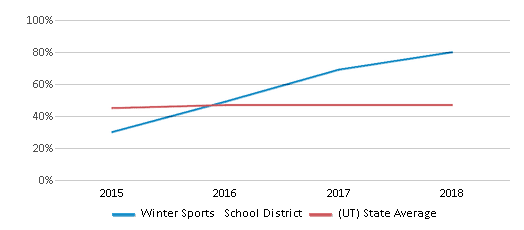
Reading/Language Arts Test Scores (% Proficient)
(17-18)≥80%
45%
Graduation Rate
≥80%
88%

Students by Ethnicity:
Diversity Score
0.13
0.46
# American Indian Students
n/a
6,356 Students
% American Indian Students
n/a
1%
# Asian Students
4 Students
11,203 Students
% Asian Students
3%
2%
# Hispanic Students
1 Student
135,730 Students
% Hispanic Students
1%
20%
# Black Students
n/a
8,999 Students
% Black Students
n/a
1%
# White Students
106 Students
481,682 Students
% White Students
93%
71%
# Hawaiian Students
n/a
10,774 Students
% Hawaiian Students
n/a
1%
# Two or more races Students
3 Students
26,165 Students
% of Two or more races Students
3%
4%
Students by Grade:
# Students in PK Grade:
-
16,573
# Students in K Grade:
-
44,583
# Students in 1st Grade:
-
47,327
# Students in 2nd Grade:
-
50,032
# Students in 3rd Grade:
-
50,137
# Students in 4th Grade:
-
50,477
# Students in 5th Grade:
-
51,752
# Students in 6th Grade:
-
50,580
# Students in 7th Grade:
-
52,075
# Students in 8th Grade:
-
52,556
# Students in 9th Grade:
31
53,806
# Students in 10th Grade:
26
55,206
# Students in 11th Grade:
32
54,321
# Students in 12th Grade:
25
51,610
# Ungraded Students:
-
-
District Revenue and Spending
The revenue/student of $10,833 is higher than the state median of $10,732. The school district revenue/student has stayed relatively flat over four school years.
The school district's spending/student of $10,377 is less than the state median of $10,829. The school district spending/student has stayed relatively flat over four school years.
Total Revenue
$1 MM
$7,309 MM
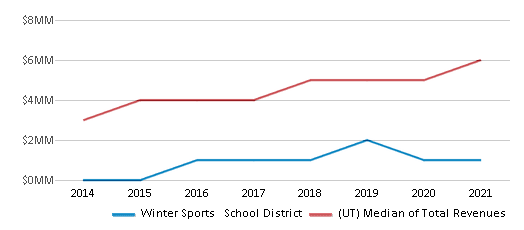
Spending
$1 MM
$7,375 MM
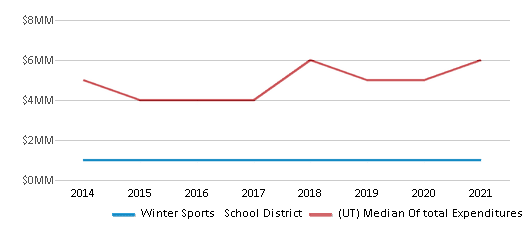
Revenue / Student
$10,833
$10,732
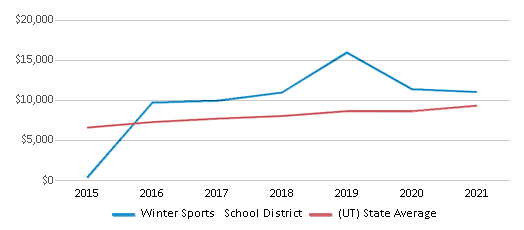
Spending / Student
$10,377
$10,829
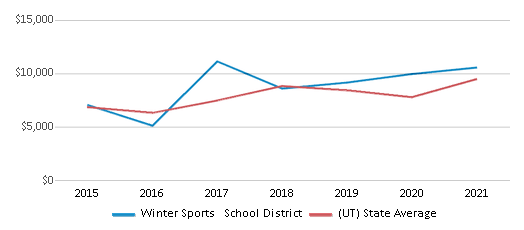
Best Winter Sports School District Public Schools (2025)
School
(Math and Reading Proficiency)
(Math and Reading Proficiency)
Location
Grades
Students
Rank: n/an/a
Winter Sports School
Charter School
4251 Shadow Mountain Drive
Park City, UT 84098
(435) 649-8760
Park City, UT 84098
(435) 649-8760
Grades: 9-12
| 114 students
Frequently Asked Questions
How many schools belong to Winter Sports School District?
Winter Sports School District manages 1 public schools serving 114 students.
What is the racial composition of students in Winter Sports School District?
93% of Winter Sports School District students are White, 3% of students are Asian, 3% of students are Two or more races, and 1% of students are Hispanic.
What is the student/teacher ratio of Winter Sports School District?
Winter Sports School District has a student/teacher ratio of 19:1, which is lower than the Utah state average of 22:1.
What is Winter Sports School District's spending/student ratio?
The school district's spending/student of $10,377 is less than the state median of $10,829. The school district spending/student has stayed relatively flat over four school years.
Recent Articles

Year-Round Or Traditional Schedule?
Which is more appropriate for your child? A year-round attendance schedule or traditional schedule? We look at the pros and cons.

Why You Should Encourage Your Child to Join a Sports Team
Participating in team sports has a great many benefits for children, there is no doubt. In this article you will learn what those benefits are.

White Students are Now the Minority in U.S. Public Schools
Increasing birth rates among immigrant families from Asia and Central and South America, combined with lower birth rates among white families, means that for the first time in history, public school students in the United States are majority-minority. This shift in demographics poses difficulties for schools as they work to accommodate children of varying language abilities and socio-economic backgrounds.





